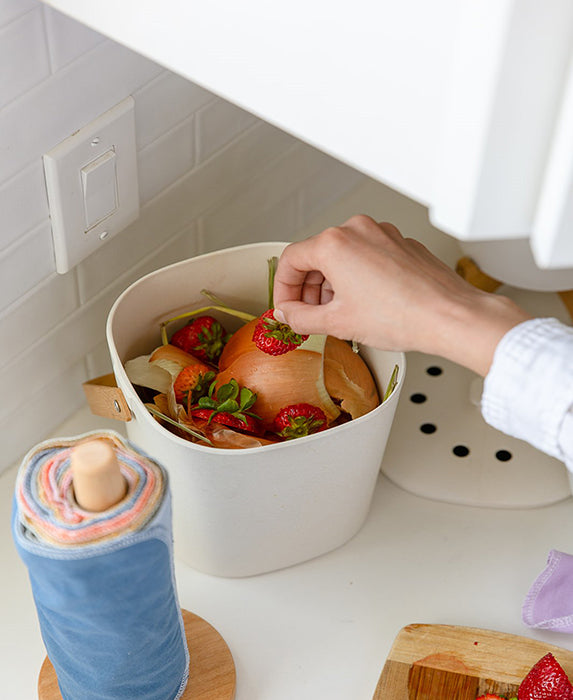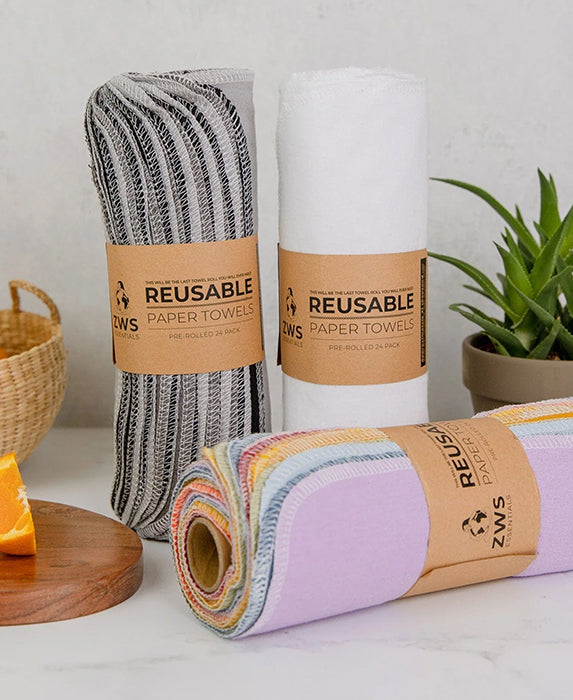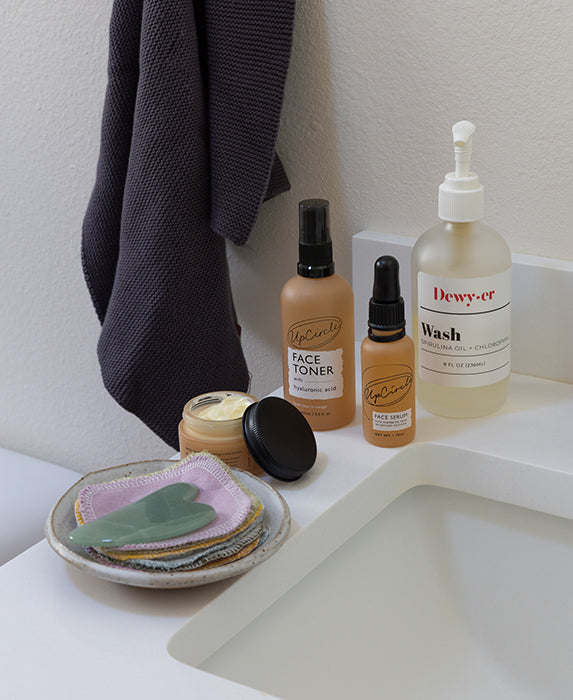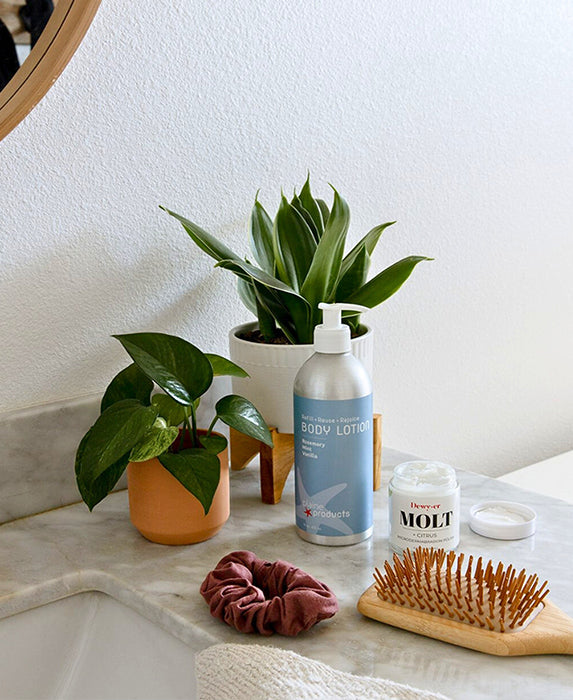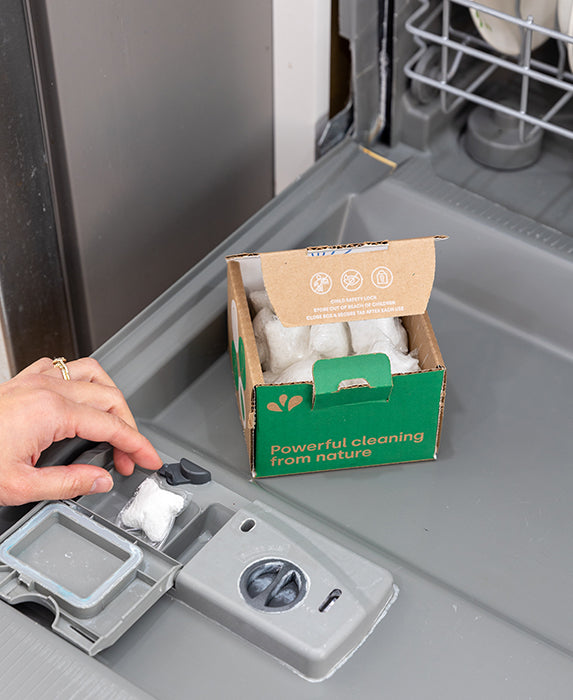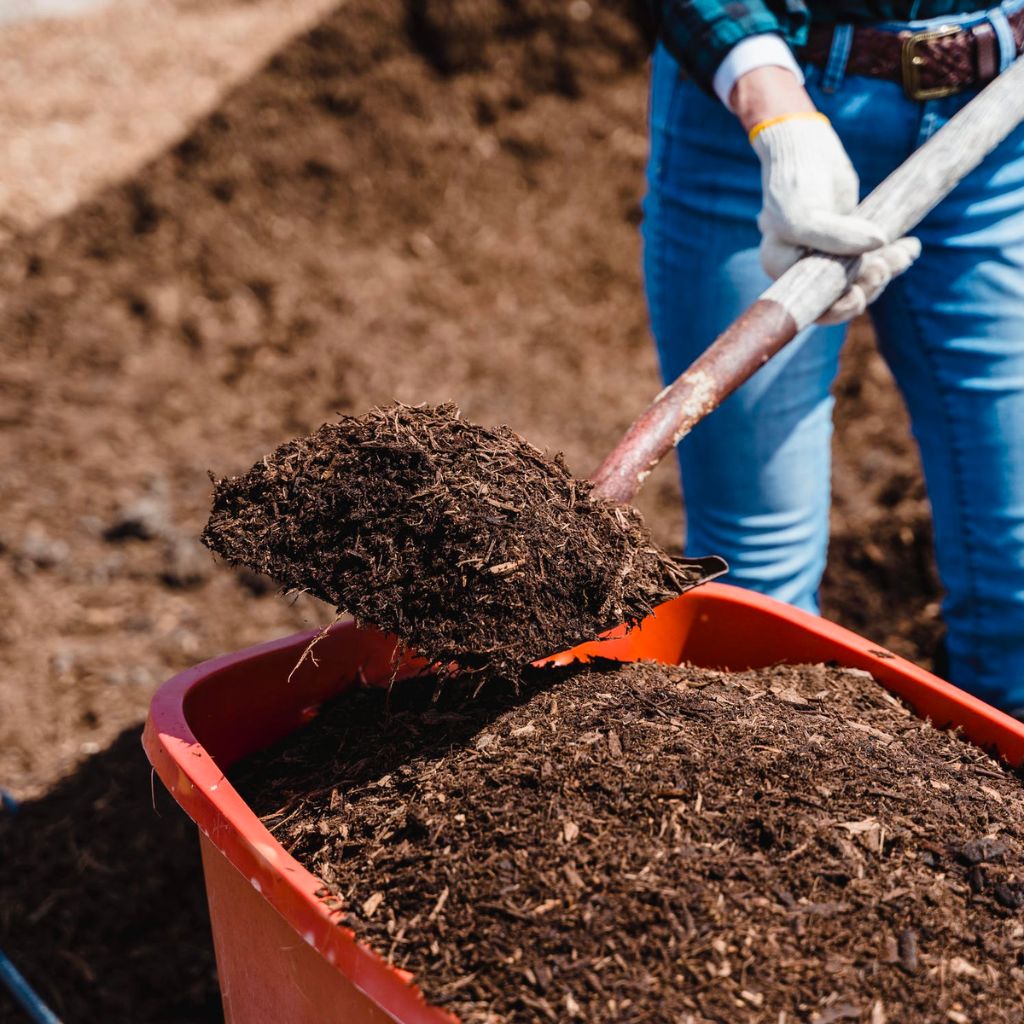Have you always wanted to start a compost at home but don’t know how? If so, keep reading! This one’s for you. As more and more everyday products become compostable and the awareness increases around landfill waste, having an at-home compost is awesome way to bring eco-friendly living into your daily life. We know home composting can seem like a daunting task, so we’ve done the research for you. Let’s get into the basics of composting and learn how to implement this into our daily lives!
Why Compost?

Let’s look at the facts. Food waste is estimated to be about 30-40 percent of our food supply and takes up 22 percent of the space at our landfills. As Americans, we tend to unintentionally contribute to this due to the lack of infrastructure and awareness around food waste. Luckily, more and more people are becoming educated on what they can do to personally cut back on their food waste! Plus, some cities (like our home of Boulder, Colorado) are now offering industrial compost pick up in the same way they pick up trash and recycling – which is an amazing solution to incentivize composting, and reduce food waste in our landfills.
But not everyone has industrial composting options. For those who don’t and have a backyard, home composting is an amazing alternative. It takes everyday food waste and converts it into nutrient-rich natural fertilizer that can be used for gardening – or to simply go back into the earth. Let’s dive into how to set up a home compost!
Building Your Compost
One of the great benefits to composting is the adaptability it has depending on your needs. There are a bunch of different ways to home compost, and finding one that fits your home and your routine is the key to success.
Piling
For starters, one of the most common ways to compost right in your backyard is through piling. To start a pile at home, find a clear area in your yard and begin to slowly add waste to the pile. Many recommend laying down twigs and sticks to help with drainage after your pile is formed. Layering the waste that you’re composting, alternating between wet and dry, allows for your compost to break down faster. To help accelerate the process, water your compost occasionally, make sure you’re covering the pile with old materials such as wood, fabric, or a tarp, and turn your compost every so often to keep your pile aerated. If you’re worried about factors such as wildlife or smells, we recommend building a small fence around your compost pile that can help block out the smell and keep unwanted animals out. In addition to building a fence, DIY’ing your compost pile is always an option, too. If you already have a fence you can build against or a sturdy wall, creating a crate like structure or wood barrel to host your compost in your backyard is a great alternative as well!

Vermicomposting
If piling doesn’t fit your style or needs, don’t fret! We have more options for you – starting with vermicomposting. Vermicomposting, aka worm composting, uses earthworm digestion and aerobic decomposition to turn food waste into rich organic soil.
You can’t just use any worms! You will need red wigglers, aka red worms. They reproduce rapidly, and stay near the surface while feeding. You can harness plastic bins, cedar bins, or bins made from one to two-inch thick styrofoam. Starting with a smaller bin at first is preferred, but you can expand your bins up to 24 x 28 inches. No matter what material you choose for your bin, it needs to be well ventilated, and have numerous holes on the bottom as well as four rows of holes along the sides. Raise your bin off earth with stakes so that air can flow under it – and you’re set for the next step!
To start, fill half of the bin with moist newspaper, and add a handful of garden soil. Then add about 1,000 red worms. Put the bin in a dark and cool room that doesn’t have much temperature fluctuation – basements or under the kitchen sink are great locations. When it comes time to feed the worms their first batch of food waste, place the food under the shredded newspaper, and follow up every one to two weeks with smaller amounts of food in different places around the bin. Always double check to see how well the worms are digesting the food from the previous feeding – and don’t feed them meat, dairy, or fermented products. The moist newsletter will occasionally need to be replaced to ensure that the food is always covered. Eventually, you’ll get to harvest your compost!
Tumbling Composter
Another awesome way to begin your home compost is with a compost turner. This product makes it easier to mix oxygen and moisture into your compost, and keep the temperature stable. While a compost pile in the backyard will need a bit more monitoring and physical engagement, the compost turner has a rotating drum that contains your compost, along with either a manual or electrical flail to move the compost and attached nozzles to apply water to the compost while it’s being turned. Here’s an example of one we love! Compared to a backyard compost pile, which can be any size you like, this one has a capacity limit – but it’s great if you don’t have a spot for a compost pile in your yard.
Kitchen to Home
No matter which way you decide to set up your home compost, we recommend you also get a small compost bin to live inside your kitchen. Start by finding a compost bin that works for you! When you’re cooking and prepping food, your compostable scraps can go into the bin, and then be emptied into the larger pile when the bin is full. This reduces the number of trips you have to make to your compost pile outside, and allows you better control over when new waste is added to the compost pile.
The Essential Ingredients
After deciding on your composting method of choice, it’s essential to know what nutrients are needed for your compost to stay healthy. Understanding the science behind composting can help you audit your waste distribution and see how it lines up with your living space and lifestyle.

To keep your compost healthy and thriving, there are a few things you must have: carbon, nitrogen, moisture, oxygen, and microorganisms. The benefits of having an outdoor compost is that these nutrients can be easier to obtain due to the natural moisture and oxygen that’s outside, plus the friendly microorganisms from worms and dirt. The breakdown of your compost relies on this formula.
The materials that you add to your compost also help dictate the chemical makeup by what they naturally omit and aerate. It is important to have a good balance of materials that release carbon and nitrogen. A few common compostable materials that add carbon are things such as wood, newspaper, and leaves. To get that nitrogen, add things like flowers, fruit and vegetable scraps, and coffee grounds!
There are so many other everyday materials that keep your compost happy and healthy – so make sure you’re looking at the makeup of what you’re adding to your pile! Whenever you’re questioning if a material is compostable, it’s never a bad idea to double check.
Other Benefits

Besides just cutting down on waste, there are multiple benefits to creating a compost in your backyard. If you live in a space where you’re able to have a garden, your compost can serve as a great natural fertilizer for your plants as well as for your lawn in general. Compost also serves as a great soil replacement, also known as “topdressing”. This feeds your garden or your plants essential nutrients naturally and saves you a trip to the store to buy soil! If what we’re describing doesn’t sound like your backyard— don’t sweat it! Everyone’s “backyard” compost will look different depending on the spaces in which we live. The goal with composting isn’t perfection, but rather to make a meaningful impact on the amount of food you’re sending to the landfills. A side effect of home composting is that you will be much more aware of your food waste overall! Saving leftovers, creating veggie broths with usable vegetable scraps, extending the life of your produce with reusable food storage, meal prepping with appropriate portions…these are all awesome ways to reduce your food waste before it becomes compostable waste at all.
Whether you’re new to home composting or are just looking for a refresh, we hope that these tips are helpful for you and kickstart your backyard or at-home compost. Although we often think of sustainability in terms of physical waste (plastic, trash, recycling, etc!) reducing our food waste is equally as important. Have any composting tips and tricks? Share them below!

